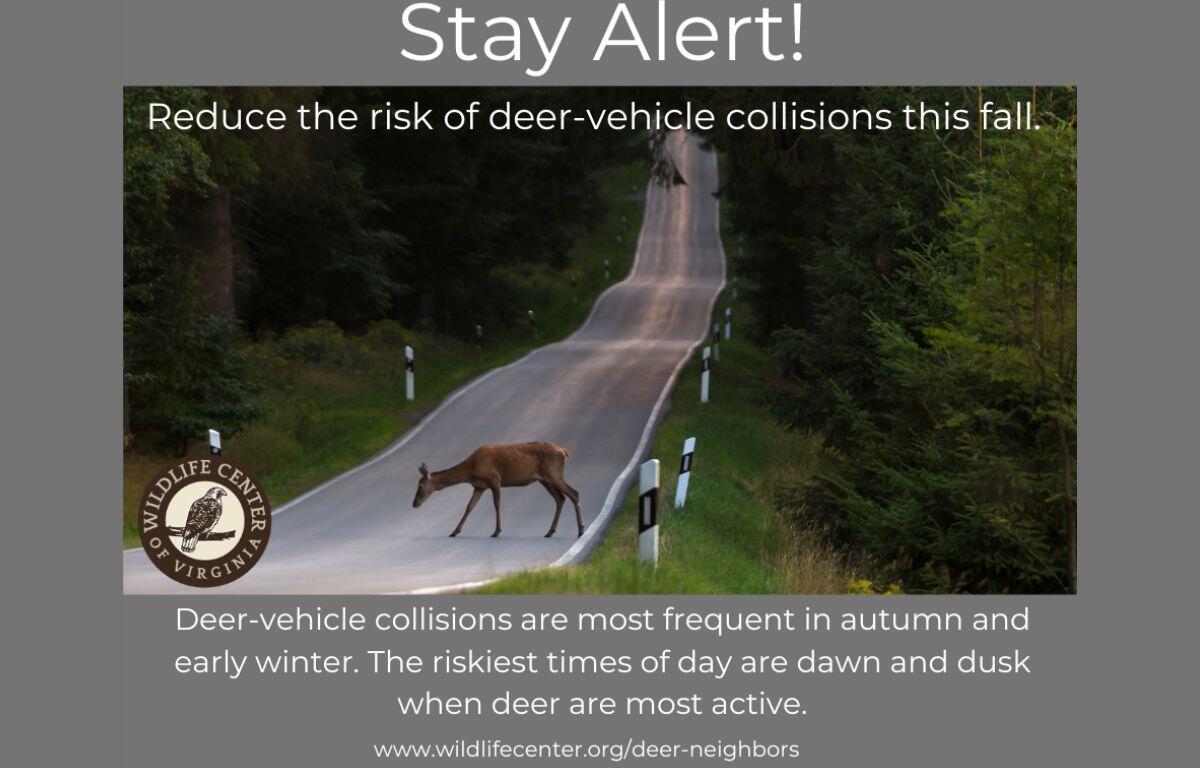WAYNESBORO, VA (Rocktown Now) — As autumn settles over Virginia, White-tailed Deer become increasingly active, and that means drivers should stay alert. The shorter days, cooler weather, and peak of mating season (known as the rut) all lead to more deer on the move. Unfortunately, this seasonal surge also brings a rise in deer-vehicle collisions. According to a 2024 State Farm study, Virginia ranks ninth in the nation for deer-related crashes, with one in every 94 drivers likely to experience a collision.
Furthermore, November is the most dangerous month for deer-vehicle collisions in Virginia. Deer are on the move throughout the day and night, and the reduced daylight hours make them harder to spot. To protect both people and wildlife, the Wildlife Center encourages drivers to take extra precautions during this high-risk season.
When Are Collisions Most Likely?
The majority of deer-vehicle collisions occur at dawn and dusk, typically between 5:00–8:00 a.m. and 5:00–8:00 p.m. During these hours, visibility is low, and deer are most active. Stay focused, reduce your speed, and scan the sides of the road for movement or reflective eyes.
How to Prevent a Collision
- Follow the speed limit and avoid distractions.
- Watch for groups of deer— if you see one deer, others are likely nearby.
- Use your high beams, when possible, to increase visibility.
- Brake don’t swerve. Swerving can cause more serious accidents.
- Stay alert near wooded areas and roadways with deer-crossing signs.
If a deer is on the road, slow down or stop and give it time to cross. After it passes, pause briefly to ensure no others are following.
What to Do After a Collision
1. Ensure your safety first. Pull over, turn on your hazard lights, and call 9-1-1.
2. Check for injuries. Even minor collisions can cause shock, so stay calm, and keep warm if temperatures are low.
3. Stay in your vehicle if the deer is still alive. A frightened or injured animal can lash out and cause serious harm.
4. Warn other drivers with hazard lights if the deer is blocking the road.
5. Do not approach the deer unless you are certain it is dead, and it is safe to move it. Responding officers can humanely handle injured wildlife.
How You Can Help
Beyond safe driving, you can make a difference by raising awareness about deer collisions and supporting efforts to make Virginia’s roads safer for wildlife. Conservation groups across the state are
developing wildlife corridors — designated safe passageways that reconnect fragmented habitats and help animals cross highways.
Learn more about these initiatives and how you can get involved:
Wild Virginia: wildvirginia.org/our-programs/wildlands-connectivity Virginia Safe Wildlife Corridors Collaborative: vswcc.weebly.com
With extra care and awareness this fall, we can all help protect both Virginia’s drivers and deer during their busiest season on the move.




